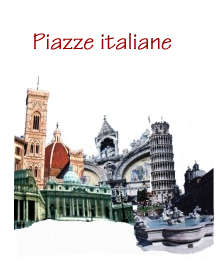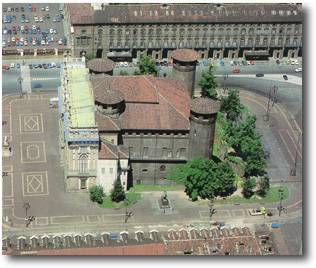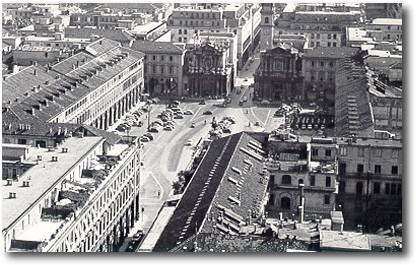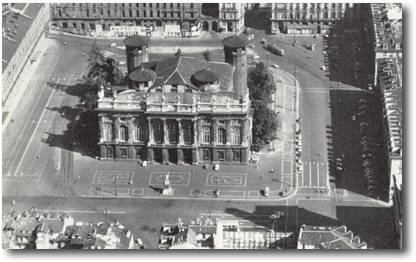
BAROQUE AND RISORGIMENTAL TURIN
The starting point for this
walk is piazza Castello in front of the Church of San Lorenzo.
You see before you the facade of Teatro Regio,behind which towers the spire of the Mole Antonelliana. In the middle of the square stands the Castello, better known as Palazzo Madama,so named because it was lived in, enlarged and decorate by the two Madame Reali, or royal widows, Marie - Cristine d'Orleans and Giovanna Battista of Savoy Nemours. For the former, Carlo di Castellamonte built the Salone degli Svizzeri in which the Senate of the Kingdom of Savoy met from 1848 to 1861 and that of the Kingdom of Italy from 1861 to 1864, for the latter, instead, Juvarrabuilt thefacade and the monumental staircase. Today the palac houses the Museo Civico di Arte Antica and its rich art collections.
Leaving the Church you pass
the cast iron railings,built in 1841 by Pelagio Palagi, which separate
Piazzetta Reale from piazza Castello.The two statues of the Dioscuri
guard the entrance. You not find in front of you the elegant, serene
facade of Piazze Reale, for two centuries a Savoy residence and today
a museum,one of the most sumptuous royal palaces in Europe. Here many
impotant artists worked in the seventeenth,einghteenth and nineteenth
centuries and three styles-baroque rococo and neoclassical-are represented.
Behind the palace, which contains a central sqare courtyard from which it is possible to admire a view of the cupola of the Cappella della Sindone, are the Giardini Reali, or Royal Gardens.you now cross via Po,which joins piazza Castello to the river. At the bottom of the street,over the river from piazza Vittorio Veneto, the neoclassical Church of the Gran madre di Dio closes the perspective like some spectacular stage set. In piazza Castello itself you pass in front of the small, compact but elaborately decorated Cafè Mussolano, where films such as "Piccolo Mondo Antico" and "Addio Giovinezza" were shot. Now pass thhrougt the Galleria Subalpina,designed by Pietro Carrera (1874), with its famous historical cafè Baratti & Milano,shopand a restaurant with outside tables.
You come out into piazza Carlo Alberto, dominated by the impressive ninenteenth-century facade of Palazzo Carignano. On the opposite side of the square are the formed stables and orangeries which have now,following wartime bombing, become the Biblioteca Nazionale, or National Library.
To your left, at the junction between via cesare Battisti and via carlo Alberto is the house of Nietzsche,where the famous philosopher lived during his stay in Turin. Nearby, at via Bogio 9, is Baroncelli's baroque Palazzo Granieri the home of the Circolo degli Artisti since1858.
Piazza Carlo Alberto is dominated, at the centre,by Marocchetti's equestrian statues of Carlo Alberto,father of the first King of Italy; beside the King stand a grenadier, a lancer, a bersagliere and an artilleryman.

Authors: Germana